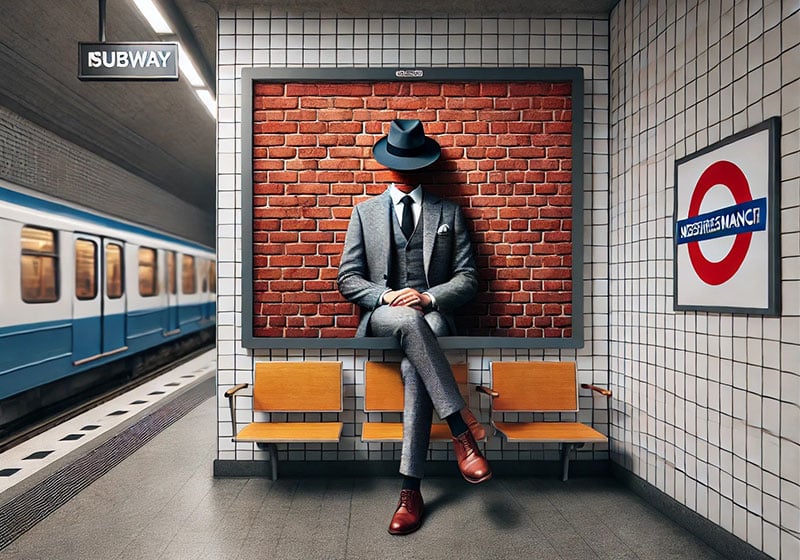Table of Contents
Ah, marketing… It never stands still!
Businesses keep pushing the envelope as they fight for customer engagement, adopting innovative tactics to cut through the noise and win the battle for eyeballs.
One such approach is fake out-of-home (FOOH) advertising, which, when done right, makes people stop, look and ask themselves, “are my eyes deceiving me?”
So, what exactly is FOOH advertising?
Let’s start with OOH advertising…
We’ve all seen out-of-home (OOH) advertising. This is any form of advertising targeted at consumers while they’re out of the home. That could be:
- While they’re waiting at a bus stop or walking to work
- While they’re in a shopping centre or at the hairdresser
It covers a wide range of ad formats and spaces, from printed billboards seen on city streets to digital displays found on trains and trams.
Three of the biggest categories of OOH advertising are:
- Posters and billboards of all shapes and sizes designed to stand out in the bustle and bustle of urban life. They are often used by local businesses and governments to reach people in a specific geographic location with their messaging and calls to action.
- Street furniture like benches, rubbish bins and phone boxes (increasingly repurposed for things like smartphone charging). These everyday objects can lead double lives through advertising.
- Transit media and mobile billboards, in other words, adverts on moving vehicles: traditionally trams, buses and taxis, but increasingly bicycles, mopeds and scooters.
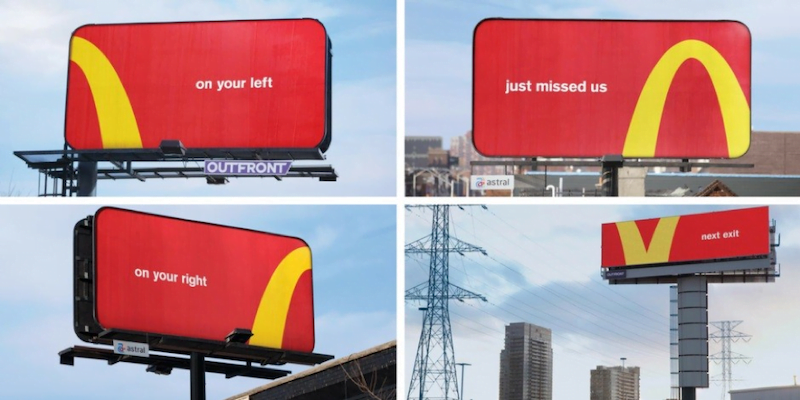
Often, OOH advertising is also digital (DOOH), which means it’s served via screens outside the home. For example, in a pub or supermarket, station or airport.
… so we can understand FOOH advertising
Fake out-of-home advertising is the latest trend in digital marketing.
It uses CGI and other special effects to virtually stage brands and their products in real places in ways that surprise and engage audiences.
And FOOH ads appear exclusively online: they look like normal videos shot by ordinary people on their phones, but contain elements created with computer-generated imagery (GCI) – hence the qualifier “Fake”. They are usually created for sharing on social media, which is why they carefully imitate the amateur aesthetic of user-generated content.
So, what are the key features of a FOOH ad?
- Short duration – generally 3-5 seconds (short-form video).
- The location where the ad is set, which should be coherent with the its message. If the place is brand owned – like a bricks-and-mortar store, FOOH can create a powerful phygital experience as part of an omnichannel strategy.
- Because the clip should look user-generated, a 16:9 vertical format usually works best.
- Overly complex animations are to be avoided: not only are they harder to make, they also look less believable in the eyes of the user.
Putting on our scholar’s cap for a moment, if we want to find the cultural archetype for the FOOH trend, it’s hard to look past the famous scene from King Kong (1933) where the titular ape climbs atop the Empire State Building.
It’s an enduring image from popular culture, one often imitated over the years and instantly recognisable by audiences young and old around the world.
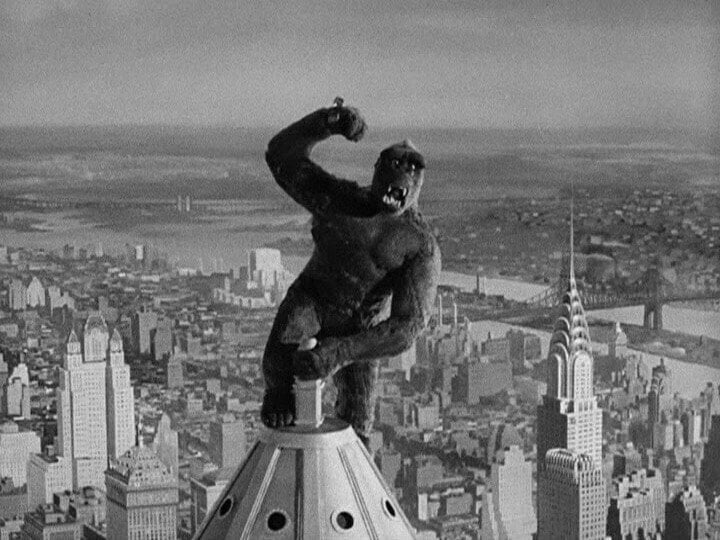
Surrealism and outsized dimensions are two key ingredients for successful FOOH content.
FOOH: textbook cases
The potential to generate a potent wow effect and word-of-mouth buzz make FOOH an attractive and disruptive strategy for leading brands like Jacquemus, Oatly, Apple and Mondelez (to name but a few).
Let’s take a closer look at some real-life strategies.
1. Jacquemus
The French luxury brand fully leans into the FOOH philosophy with its surreal images of outsized handbags seemingly floating along the streets of Paris.
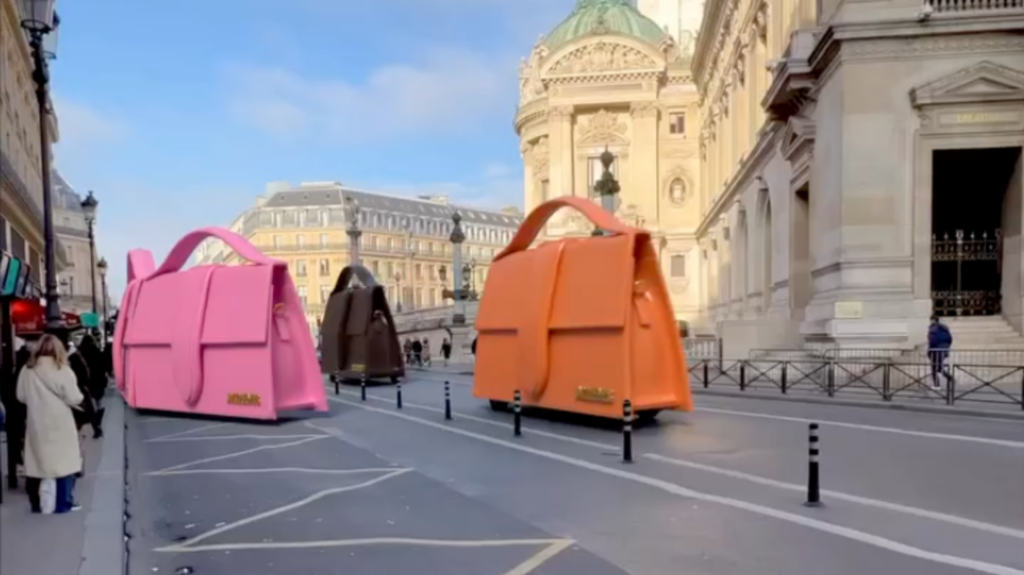
Unsurprisingly, the fashion industry was an early adopter of FOOH: in another memorable campaign, Balenciaga made it appear as if an enormous handbag were protruding from a New York skyscraper, thanks to some incredibly realistic 3D animation.
2. Oatly
“The medium is the message” as communication theorist Marshall McLuhan famously observed. And that message was not lost on the marketing and branding team at Oatly.
They came up with an ingenious way of circumventing a peculiar Parisian byelaw. In the French capital, advertising murals are allowed, but only so long as they don’t feature products or logos. So the Oatly team first created a series of murals daubed with statements like “Wouldn’t this wall be much nicer with a carton of oat drink?” and then created videos showing couriers positioning Oatly deliveries, complete with product images, so that they line up perfectly with the murals and create the illusion that the murals feature pictures of Oatly cartons. You need to see it to believe it!
3. JD Sports
In rainy London, those poor old buildings are forced to stand out in the cold for much of the year. That seems to be the idea behind JD Sports’ much talked about FOOH campaign in which Big Ben was wrapped up warm in a North Face jacket.
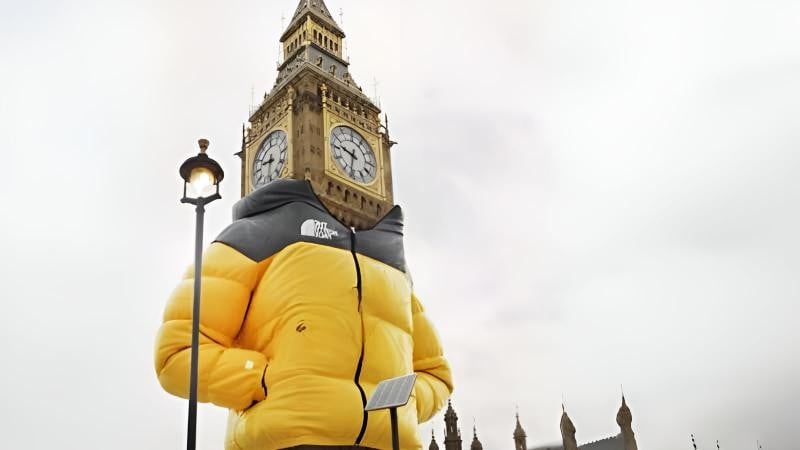
The campaign was successfully replicated with iconic landmarks in cities around the world, including the Empire State Building in New York.
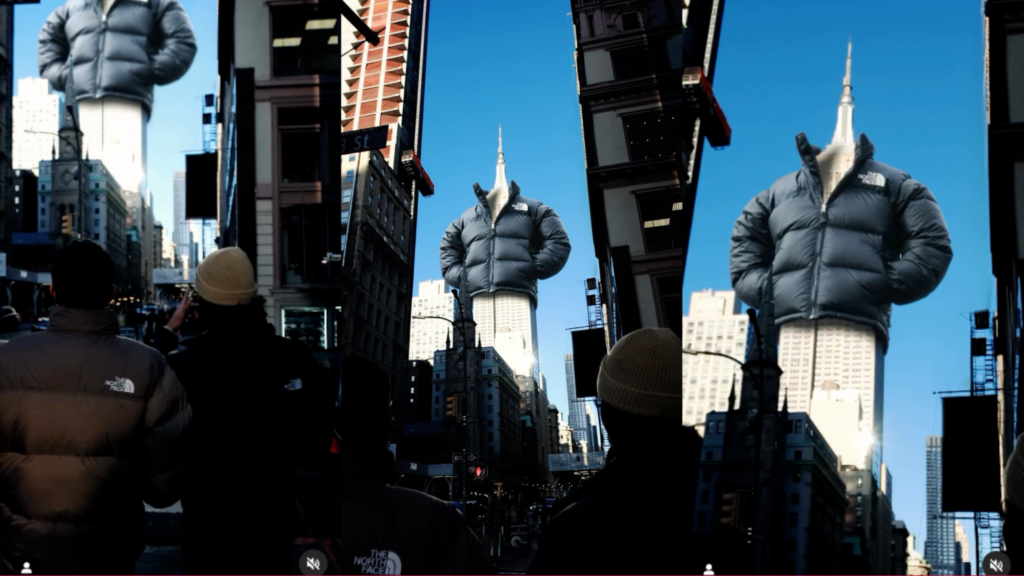
Dressing buildings is now a proven FOOH tactic and has also been adopted by brands like Havaianas and Longchamp.
4. Barbie
Lately, Mattel has worked hard to relaunch Barbie as a purpose-driven brand and an intergenerational symbol of female empowerment. This FOOH ad set beside the world’s tallest skyscraper, the Burj Khalifa, was part of the campaign to promote the eponymous film in 2023. It fit perfectly with the summery and carefree setting of Dubai, and generated enormous buzz on social media.
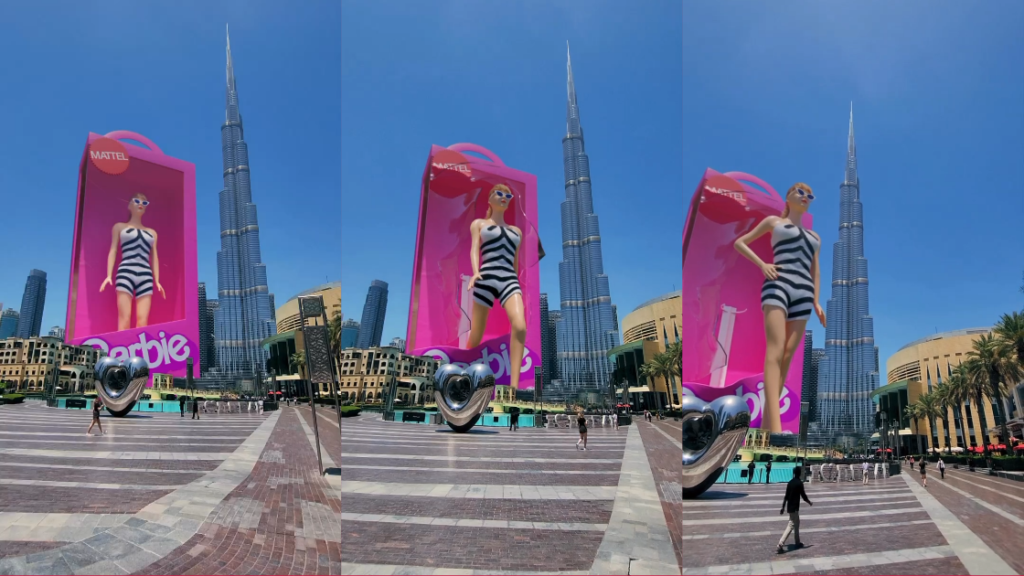
5. Maybelline
It’s still not clear whether this ad was produced by the brand, or was actually a user experiment. Regardless, as ever in FOOH, what really matters is the idea: how do you convey the effect of Maybelline?
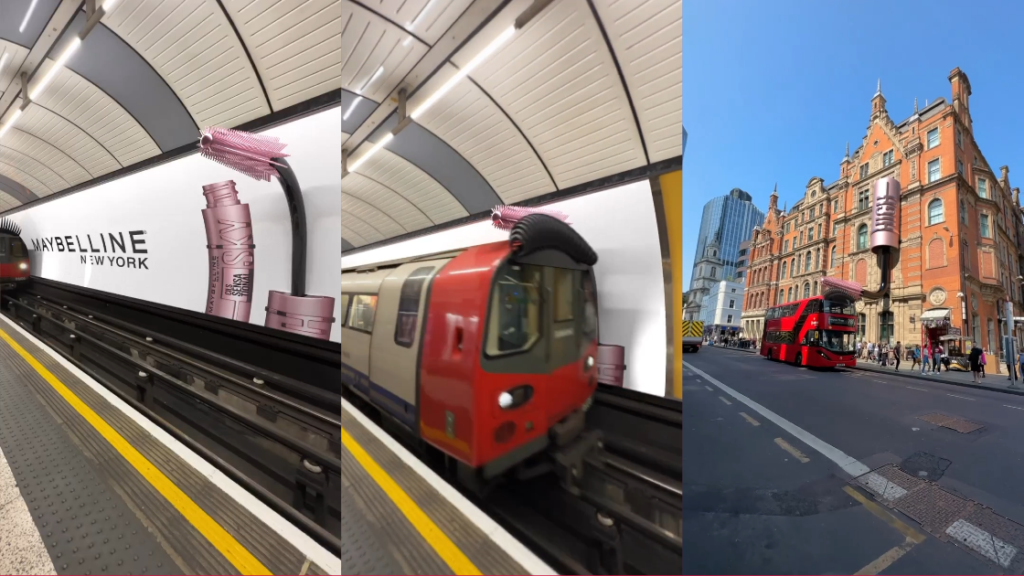
FOOH and SMEs: dream or reality?
All the examples we’ve given are ofhuge brands with huge budgets and millions of customers around the world. So, does this mean FOOH is only for big players?
Absolutely not.
In fact, if you think about it, the philosophy behind FOOH is tailor-made for SMEs.
It’s about taking a good branding, messaging or marketing idea and using digital technology to create an effect that would otherwise be unobtainable. And then it’s about harnessing the amplifying power of social media for maximum impact.
FOOH can create the illusion of a big budget advertising campaign but for a fraction of the cost, making it an attractive option for emerging brands and start-ups.
Here are some great reasons to throw FOOH into your marketing mix
Fake out-of-home advertising may not be the solution to all your marketing challenges, but you should definitely consider including it in your marketing mix.
There’s a sea of articles on FOOH out there, but if we had to recommend one, it would be this piece by Sean Pelser, Fake Out Of Home (FOOH) Advertising: A Trend Worth Embracing? And to save you fromtrawling through the rest, we’ve outlined below seven reasons why you should seriously consider FOOH.
Engagement and virality
- FOOH content is designed to intrigue and surprise, thereby increasing user engagement and the likelihood of being shared on social media.
- Users tend to interact more with immersive content that creates a wow effect
Cost
- You don’t need to buy physical ad space, significantly reducing production and distribution costs.
- What’s more, FOOH lets you simulate high-impact campaigns that would be otherwise be prohibitively expensive to produce.
Flexibility
- Unconstrained by the limits of traditional physical locations, you can create extraordinary visual experiences.
- You can carefully tailor your message to your target and channel.
Amplification
- FOOH fits perfectly into existing social and digital campaigns, boosting brand visibility.
- It can be used as content for online ad campaigns, influencer marketing and corporate/brand storytelling platforms.
Differentiation
- As an innovative and unconventional approach, FOOH helps you stand out from the competition.
- It strengthens perceptions of a brand as fresh, creative and contemporary.
Measurability
- Because it is distributed online, FOOH lets you track impressions, interactions and conversions far more precisely than traditional OOH advertising.
Reach
- Unlike physical OOH, which is limited to a specific geographic area, FOOH can reach a global audience at a much lower cost.
- This makes it ideal for marketing strategies aimed at generating mass awareness.
As artificial intelligence inevitably expands the potential of FOOH advertising, marketers must be mindful of the their responsibility towards audiences, who may confuse FOOH campaigns for real events.

